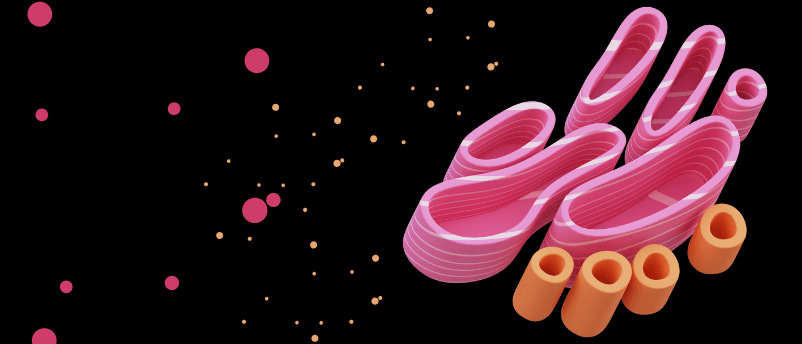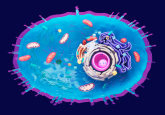Getting the inside scoop on ribosome function

A new technique reveals ribosome cooperativity, providing new insights into protein production.
Researchers from Marvin Tanenbaum’s group at the Hubrecht Institute (Utrecht, Netherlands) have developed a novel technique that allows them to monitor individual ribosomes as they translate mRNA into proteins. During their study, they found that ribosomes exhibit cooperative behavior when encountering difficulties in the cell. The technique offers new insights into protein production and mRNA translation and provides researchers with a tool to study cellular functions in greater detail.
Ribosomes are cellular organelles that synthesize proteins by translating strands of mRNA into amino acids, which form polypeptide chains that fold into proteins. Ribosomes translocate along the mRNA strands one codon at a time. Codons are three nucleotide sequences in RNA that correspond to an amino acid; each codon binds to a tRNA molecule carrying the appropriate amino acid via an anticodon sequence that matches the codon sequence. These tRNA enter the ribosome via the aminoacyl site, linking their amino acid to the chain held by the tRNA sitting in the peptidyl site. As the ribosome translocates along the mRNA strand, the tRNA in the entry site moves into the peptidyl site, temporarily holding the amino acid chain while the ribosome reads the next codon. Once a new tRNA enters and links, the ribosome moves along, the tRNA in the peptidyl site releases its amino acid chain to the next tRNA and moves into the exit site to be released by the ribosome.
Although this process has been well documented, it is less clear how ribosomes resolve the issues they run into when dealing with difficult-to-translate sequences, which affect translation dynamics. While previous work in this area has studied the biochemical and structural compositions of individual ribosomes, translation in vivo is often completed by multiple ribosomes, which form a polysome.

What the FLuc?! Revealing the pathways responsible for secretory protein biogenesis
A novel reporter protein has been developed to enable the investigation of protein biogenesis in the ER and its disruption in disease.
To investigate ribosome translation dynamics, the team developed a specialized molecule: stopless-ORF circular RNAs (socRNAs). socRNAs are circular RNAs lacking in-frame stop codons, meaning they are continuously translated by one or more ribosomes. This allows for precise measurements of translation kinetics while enabling comparisons of translation of the same mRNA sequence by either a single ribosome or multiple ribosomes simultaneously. These socRNAs were tethered to the plasma membrane and tagged with ALFANb. They were then imaged using spinning disk confocal microscopy.
“We observed that individual ribosomes move at slightly different speeds and sometimes pause for extended periods,” explained Sora Yang, co-first author of the study. “Detecting these speed differences was challenging, so, we teamed up with Marianne Bauer’s group of computational scientists at TU Delft’s Department of Bionanoscience (Netherlands). With their expertise, we could demonstrate that ribosomes indeed operate at different speeds.”
Due to these differing speeds or during difficult-to-translate sequences, sometimes ribosomes collide. However, the team found that brief collisions did not trigger the cell’s quality control mechanisms; only after several minutes were these collisions cleared. Contrary to previous beliefs, temporary collisions may be beneficial, as the study showed ribosomes ‘cooperating’ with each other to navigate difficult-to-translate RNA sections.
Their new technique and findings offer an insight into ribosome behavior at a deeper level, potentially contributing to our understanding of the role of protein synthesis in health and disease.




